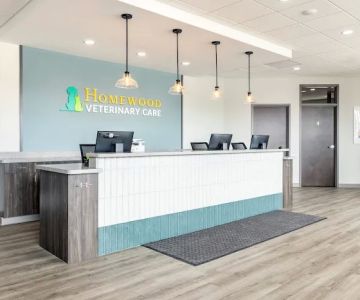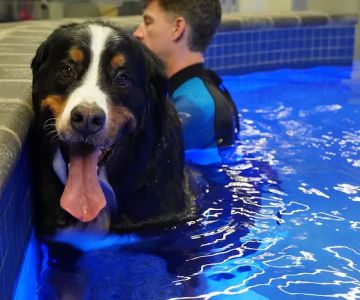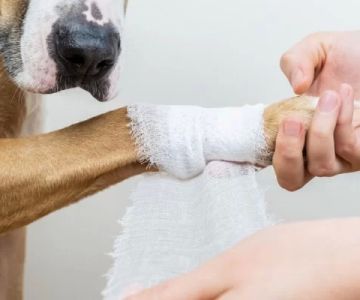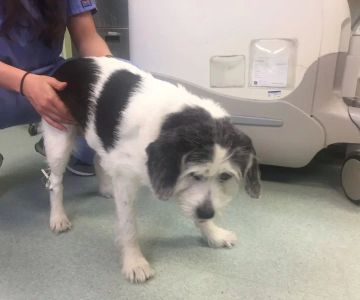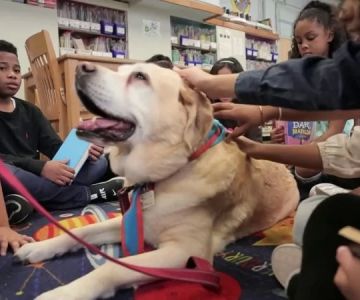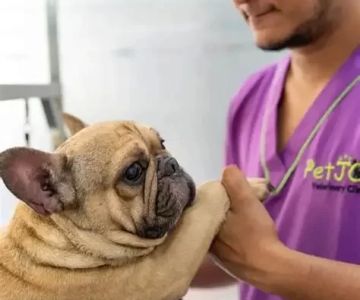Skin Allergies & Hot Spots in Dogs: What You Can Do at Home
- Understanding Skin Allergies and Hot Spots in Dogs
- Common Causes of Skin Allergies and Hot Spots
- Recognizing the Symptoms of Skin Allergies and Hot Spots
- Effective Home Treatment for Skin Allergies and Hot Spots
- How Hidden Brook Veterinary Can Help with Your Dog's Skin Care
Understanding Skin Allergies and Hot Spots in Dogs
Skin allergies and hot spots are common issues for dogs, often leading to discomfort and distress. These conditions are typically characterized by red, irritated, and inflamed areas on the skin, which can result from a variety of causes such as environmental allergens, fleas, or food sensitivities. Hot spots, in particular, are localized areas of infection that can develop rapidly, especially if the dog is constantly licking, biting, or scratching the area. Fortunately, with the right approach, these conditions can be managed effectively at home with proper care and attention.
Common Causes of Skin Allergies and Hot Spots
1. Environmental Allergens
Just like humans, dogs can suffer from allergies to environmental triggers such as pollen, dust mites, or mold. These allergens can cause skin irritation, especially if your dog spends a lot of time outdoors during allergy season. When exposed to these allergens, dogs may begin to scratch or lick excessively, leading to the development of hot spots.
2. Fleas and Parasites
Flea infestations are a major cause of skin allergies and hot spots in dogs. Even a single flea bite can trigger an allergic reaction, causing intense itching and irritation. If left untreated, the affected area can become infected and develop into a hot spot. Other parasites like ticks or mites can also contribute to skin problems.
3. Food Allergies
Some dogs develop allergies to certain ingredients in their food, such as beef, chicken, or grains. Food allergies can cause a variety of symptoms, including itchy skin, gastrointestinal issues, and ear infections. If your dog shows signs of a food allergy, it’s important to work with a veterinarian to identify the culprit and adjust their diet accordingly.
4. Poor Grooming Habits
Lack of proper grooming can contribute to skin issues, as dirt, oil, and debris build-up on the coat and skin. Regular baths and brushing can help keep your dog’s skin clean and prevent the development of skin infections or hot spots. However, excessive bathing or using harsh products can also irritate the skin, so it’s important to find a balance.
Recognizing the Symptoms of Skin Allergies and Hot Spots
1. Itching and Scratching
One of the most common signs of skin allergies in dogs is itching. If your dog is constantly scratching, licking, or biting a specific area, it may be a sign that they are experiencing an allergic reaction. Hot spots can develop as a result of continuous self-trauma from excessive scratching.
2. Redness and Swelling
Hot spots typically appear as red, inflamed patches of skin that may be moist or oozing. The affected area can be warm to the touch and may become swollen. In some cases, the skin can break open, leading to an infection.
3. Hair Loss
As your dog scratches or bites at the affected area, they may lose fur around the hot spot. This hair loss is a result of constant irritation and damage to the hair follicles. If left untreated, the area may become more extensive and harder to treat.
4. Odor
Infected hot spots often develop a foul odor, which is a sign of bacterial growth in the affected area. This can be a major indicator that the condition is progressing and requires immediate attention to prevent further infection.
Effective Home Treatment for Skin Allergies and Hot Spots
1. Cleaning the Affected Area
For both skin allergies and hot spots, the first step is to clean the affected area thoroughly. Gently wash the area with a mild, antiseptic solution to remove dirt, bacteria, and any debris that may have accumulated. This helps prevent further infection and soothes the skin.
2. Applying Topical Treatments
Topical treatments such as hydrocortisone creams or aloe vera gel can provide relief from itching and inflammation. Be sure to choose a product specifically formulated for dogs and avoid using any human products, as they may contain ingredients harmful to pets.
3. Preventing Scratching and Licking
To give the affected area time to heal, it's important to prevent your dog from scratching or licking the area. This can be achieved by using an Elizabethan collar (cone) or protective clothing to cover the area. Additionally, you can try distracting your dog with toys or treats to reduce the urge to self-soothe.
4. Using Flea and Tick Preventatives
If fleas are contributing to your dog’s skin problems, make sure to use an effective flea preventative. Regular treatments can help prevent flea infestations and reduce the risk of flea-induced hot spots. Consult with your vet for recommendations on the best products for your dog’s specific needs.
5. Dietary Adjustments
If food allergies are suspected, consider switching your dog to a hypoallergenic diet. These specialized foods are designed to eliminate common allergens and provide your dog with the necessary nutrients without causing allergic reactions. Your veterinarian can help guide you in choosing the right diet for your dog.
How Hidden Brook Veterinary Can Help with Your Dog's Skin Care
If your dog’s skin allergies or hot spots persist despite your best efforts at home, it’s time to consult a veterinarian. At Hidden Brook Veterinary, we specialize in diagnosing and treating skin conditions in dogs. Our team can help identify the underlying causes of your dog’s skin issues, recommend effective treatments, and provide guidance on long-term management. Whether it’s allergies, flea infestations, or other skin conditions, we’re here to support you and your pet every step of the way.
Contact Hidden Brook Veterinary today to schedule an appointment and get your dog the care they need to feel better and live comfortably.


